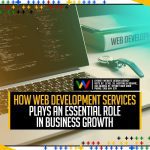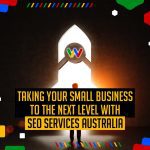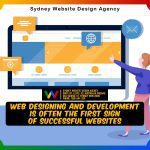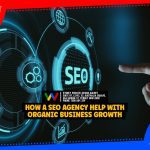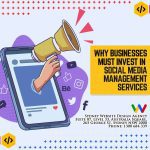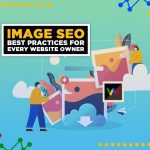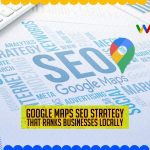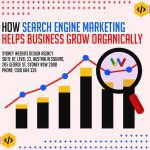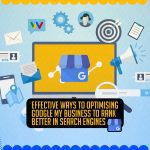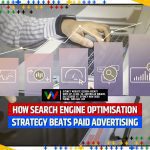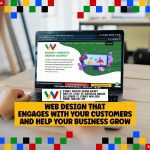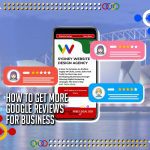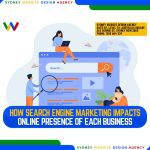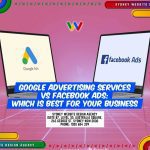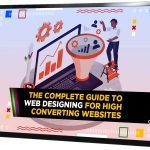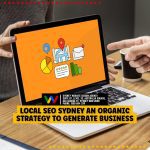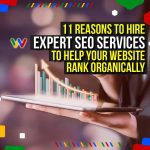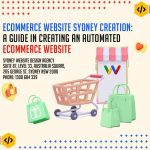Websites That Convert Like Crazy
Web designing is the first step to high-converting websites. This is a fact. Why? In a society where people understand that they have a myriad of options available to them at a click of their fingertips, settling on a specific brand or service is not always the case. They will always try to find the best options at the best prices available.
For small businesses with limited resources and people to address different aspects of the business such as marketing online, is it possible for them to achieve high-converting websites? The answer is yes.
In this guide, we’ll show you how to design high-converting small business websites. We’ll also provide some tips on things to avoid, so you can make sure that your website is conversion-friendly.
Introduction
Web designing is the first step to high-converting websites. This is a fact. Why? In a society where people understand that they have a myriad of options available to them at a click of their fingertips, settling on a specific brand or service is not always the case. They will always try to find the best options at the best prices available.
For small businesses with limited resources and people to address different aspects of the business such as marketing online, is it possible for them to achieve high-converting websites? The answer is yes.
In this guide, we’ll show you how to design high-converting small business websites. We’ll also provide some tips on things to avoid, so you can make sure that your website is conversion-friendly.
Table of Contents
- Web Designing Purpose for Businesses.
- How Does an Audience Perceive Web Design?
- Defining Web Design Thru The Eyes of a Web Designer
- Why Small Businesses Need High-Converting Websites
- When Is A Website High Converting, and When Is It Not?
- Benefits of Having High-Converting Websites
- Steps in Designing Effective Small Business Websites
- Website Design Tips for Increasing Conversions
Web Design for Businesses

Creating a business website can be a daunting, often drawn-out task. But this is not true for web design companies like ours. We treat every web designing project as our own and as an opportunity to showcase our expertise and talents in designing websites for businesses.
Our commitment to each of our clients is evident in the high-quality websites we create that help businesses achieve their goals. We have a team of graphic designers to always create websites the best visual elements, a skilled web development team to work on the structure of your website and a systematic project manager that seamlessly manages our day-to-day operations. Our team of specialists takes a consultative approach to understand your business, its products and services, target market, and unique selling proposition. With this information, we can develop a custom web design solution that will help your business grow online.
Websites for Businesses – Prices
The cost of a business web design will depend on the size and scope of the project. For small businesses, we typically recommend a budget of $2,500 to $5,000. For larger businesses, the budget can range from $10,000 to $100,000 or more. Additional cost may be required for additional search engine optimization, mobile apps development, and other unique software development needs.
To get an accurate estimate for your project, we recommend scheduling a discovery call with our team. During this call, we’ll learn more about your business and what you’re looking to achieve with your website. We’ll also be able to provide you with a proposal that outlines the cost of your project.
Web Design for Audiences

Ideally, we design websites both for our clients and their audiences. Afterall, these are the people who will go over the design elements, user interface, color scheme and other visual design on each web page. A part of our website development process is to dig deeper to fully understand what our client’s audience’s needs are.
Aspiring web designers should always consider market research as one of the basic skills in creating the ultimate web design for their clients. Without it, you will miss the web design basics that will make these adaptive design platforms ideal for the unique set of audiences your clients may have.
When designing websites for audiences, always think of the following:
- How can I make a responsive design that they can easily use and access?
- What are the web pages that should be included on the website?
- What graphic elements should be included to capture and retain engagement?
- Do I need to add several functional elements to make the UX design ideal for the audiences?
These questions may seem to be basic principles for web design, but in reality, these are the elements that complete a human centred design ideal for most types of audiences.
Web Design for Web Designers

Now, together with our clients and audiences in mind, our team also promotes the practice of using web developers and designing for web designers. But what does this actually mean?
In our team, we allow our web designers to explore all the possibilities when it comes to the visual elements and the web development process that they execute in creating websites. From creating online platform websites, other web design basics, to more comprehensive services. They are given the freedom to explore different possibilities in user friendly interface design, still with our client’s needs and the audiences in mind.
With research, technical skills, and a drive to stay updated with coding language and design tool webflow, we continue to nourish our fundamental skill set in design while engaging in collaborative process with our clients. We allow our web designers to showcase their talents, creating the best web apps and web templates for small business owners and large clients alike.
Finding the ideal web design team to make your vision a reality may be challenging, and it should not be taken lightly. It’s a significant decision with a big investment potential.
You are your website. It is a reflection of you and your brand—it’s who you are, what you do, and how you do it. It must be practical while still retaining the appearance and personality of your brand.
Likewise, it’s critical to find someone who understands you, your objectives, and provides feedback and suggestions so that you can achieve your goals. You want a team that’s dedicated to your success and willing to grow with you as your business evolves.
At our web design agency, we treat every client relationship as a partnership. We work closely with you from start to finish, ensuring that your website is everything you want it to be—and more.
Why Small Businesses Need High-Converting Websites

In today’s digital world, small businesses can no longer afford to have a website that doesn’t convert. Customers expect small businesses to have an online presence, and they will go elsewhere if they don’t find what they’re looking for on your website.
What’s more, a high-converting website is not a luxury—it’s a necessity. A website that fails to convert is a waste of time and money, and it can actually hurt your business.
Consider this: if you’re spending money on marketing and driving traffic to your website, but your website isn’t designed to convert visitors into leads or customers, you’re losing out on potential revenue. Worse yet, you may be doing damage to your brand.
A high-converting website, on the other hand, will generate leads and sales for your business. It will also help you build trust and credibility with your target audience.
When Is A Website High Converting, and When Is It Not?

A high-converting website is one that is designed to convert visitors into leads or customers. It is easy to navigate and understand, and it provides visitors with the information they need to make an informed decision.
There are several factors that contribute to a high-converting website. Here are some key elements to consider:
Visibility
Your website must be visible to your target audience. This means you must clearly understand who your target audience is and what they’re looking for. Once you know this, you can design your site accordingly and use the right keywords so that your site shows up in search results.
Easy navigation
Your website should be easy to navigate so that visitors can find the information they’re looking for quickly and easily. Use clear menus and simple page layouts so that visitors don’t get frustrated and give up on your site.
Informative content
The content on your website must be informative and relevant to your target audience. This means including clear and concise descriptions of your products or services, as well as helpful blog articles, infographics, and other forms of content that will educate and engage your visitors.
Strong calls to action
Your website should have strong calls to action that encourage visitors to take the next step, whether that’s subscribing to your email list, downloading a free e-book, or making a purchase. Make sure your calls to action are visible and easy to find so that visitors don’t miss them.
Optimized for mobile
In today’s digital world, it’s essential that your website is optimized for mobile devices. More and more people are using their phones and tablets to browse the web, so it’s important that your site is designed to look good and work well on these devices.
When visitors move from a high-converting site to one that is less effective, they will be more inclined to abandon. They’ll pick out the key elements of the value proposition and search for other elements of content on your website; you’ve lost them.
Benefits of Having High-Converting Websites

There are many benefits of having a high-converting website, including:
Generating more leads
A high-converting website is designed to generate more leads for your business. By making it easy for visitors to find your site and providing them with relevant and targeted content, you can encourage them to take the next step in the buyer’s journey and become a lead.
Increasing sales
A high-converting website can also help increase sales by providing visitors with the information they need to make an informed purchase decision. If your site is easy to use and provides visitors with a great user experience, they’re more likely to buy from you.
Building trust and credibility
A well-designed website that is informative and trustworthy can help build trust and credibility with your target audience. This is especially important if you’re selling products or services online.
Improving search engine ranking
A high-converting website can also help improve your search engine ranking. This is because search engines like Google consider many factors when determining where to rank a website, including the site’s design, content, and user experience. By optimizing your site for search engines, you can improve your chances of appearing higher in search results and driving more traffic to your site.
A high-converting website is an essential part of any online marketing strategy. If you’re not certain how to design a website that meets your business goals, our team of experts can help. Schedule a discovery call today to get started.
Steps in Designing Effective Small Business Websites

During the development of a website, web designers are frequently involved with technological concerns and coding systems such as wireframes, code, and content management. But attractive design isn’t about how well you integrate social media buttons or stunning visuals. Effective and good web design refers to a website with a framework that is consistent across the board.
So, let’s get started!
The first step in creating a high-converting small business website is to understand what your website’s goals are. What do you want your website to achieve? Are you looking to generate leads, sell products or services, or simply raise awareness for your brand? Once you know what your website’s purpose is, you can start to think about how to design it in a way that will support that goal.
Next, you need to consider your target audience. Who are you trying to reach with your website? What are their needs and wants? What kind of information are they looking for? Keep your target audience in mind as you make decisions about the overall design and layout of your site.
Once you have a good understanding of your goals and target audience, it’s time to start thinking about the look and feel of your site. The visual design of your site should be based on two things: your brand and your target audience. Your brand will dictate the overall tone and style of your site, while your target audience will help you determine what kind of visuals will resonate with them.
When it comes to the actual design of your small business website, there are a few key things to keep in mind.
First, less is more. Keep your design clean and simple – too much clutter will only serve to distract and overwhelm visitors.
Second, make sure your site is easy to navigate. Use clear, intuitive menus creating layouts and labelling so that visitors can find their way around without getting frustrated.
Third, use whitespace effectively. Give your content room to breathe by using plenty of negative space in your design. This will help visitors focus on the most important information on your site.
Last, pay attention to the details. Small things like typography and iconography can make a big impact on the overall look and feel of your site. Make sure your fonts are easy to read and that your icons are consistent with your overall design.
Now that we’ve covered the basics of interactive elements of web design, let’s take a more in-depth look at each of these elements.
Basic Web Design Layout
Layout is the foundation of any good web design. It’s what determines the visual hierarchy and how all the different elements on your page will be arranged and structured. A well-designed layout will be easy to navigate and will guide visitors through your content logically.
Typography
The typography on your site plays a crucial role in its overall look and feel. The right fonts can make your content more readable and help to convey the tone of your brand. The wrong fonts, on the other hand, can make your site look messy and unprofessional.
Colours
Colour is one of the most important elements of web design. It can be used to set the tone of your site, convey emotion, and even influence visitors’ behaviour. When choosing colours for your website, it’s essential to think about both function and form. That is, you want to choose colours that will serve a specific purpose (like highlighting call-to-action buttons) while also creating a pleasing visual aesthetic.
Graphic Elements
Images are a crucial part of any web design. They can help to break up content, add personality to your site, and even convey emotion. But when it comes to using images in web design, it’s important to use them wisely.
Creating a high-converting small business website is no easy feat. With so many moving parts and factors to consider, it’s difficult to know where to start.
That’s why we’ve put together this comprehensive guide for great web designer. In it, we’ll cover everything you need to know about web design – from the basics of layout and typography to more advanced concepts like colour theory and usability principles. By the end of this guide, you’ll have all the tools and knowledge to create a stunning, effective website for your small business.
Website Design Tips for Increasing Conversions from SWDA
Your website is one of your most significant marketing tools. It’s where you showcase your products or services, build relationships with potential customers, and drive conversions.
Your website is one of your most significant marketing tools. It’s where you showcase your products or services, build relationships with potential customers, and drive conversions. Investing in a reliable web designer for your brand is not just about having a visual representation of your brand online. Working with reliable web design teams makes it possible to grow your brand faster, simply by optimising the design of your website.
With Sydney Website Design Agency, you’re guaranteed to get a website that’s not only aesthetically pleasing, but also converts well. Are you ready for the change? Contact us today to learn more.
Web Designing Frequently Asked Questions
What is visual design in web development?
How does visual hierarchy impact web design?
What are some essential design elements in web development?
Each of these elements contributes to the visual appeal and functionality of a website, ultimately shaping the user experience.
How does responsive design contribute to visual appeal?
By providing a consistent experience regardless of the device used, responsive design enhances user satisfaction and engagement.
Why is visual accessibility important in web design?
Considerations such as colour contrast, font size, and navigation options play a significant role in making the web accessible to a broader audience.
What role do web design tools play in visual design?
These tools streamline the design process, allowing designers to create visually stunning layouts and prototypes with ease.
How can small business owners improve their web presence through visual design?
Investing in visually appealing websites with intuitive interfaces, businesses can enhance their brand image and attract more customers online.
What should web developers know about visual design?
Collaborating closely with designers and incorporating visual design considerations into their development process, developers can ensure that websites not only look great but also function seamlessly for users.
Website Design Conclusion

Your website is one of your most significant marketing tools. It’s where you showcase your products or services, build relationships with potential customers, and drive conversions.
Your website is one of your most significant marketing tools. It’s where you showcase your products or services, build relationships with potential customers, and drive conversions. Investing in a reliable, professional web designers or designer for your brand is not just about having a visual representation of your brand online. Working with reliable web design teams makes it possible to grow your brand faster, simply by optimising the design of your website.
With Sydney Website Design Agency, you’re guaranteed to get a website that’s not only aesthetically pleasing, but also converts well. Are you ready for the change? Contact us today to learn more.







